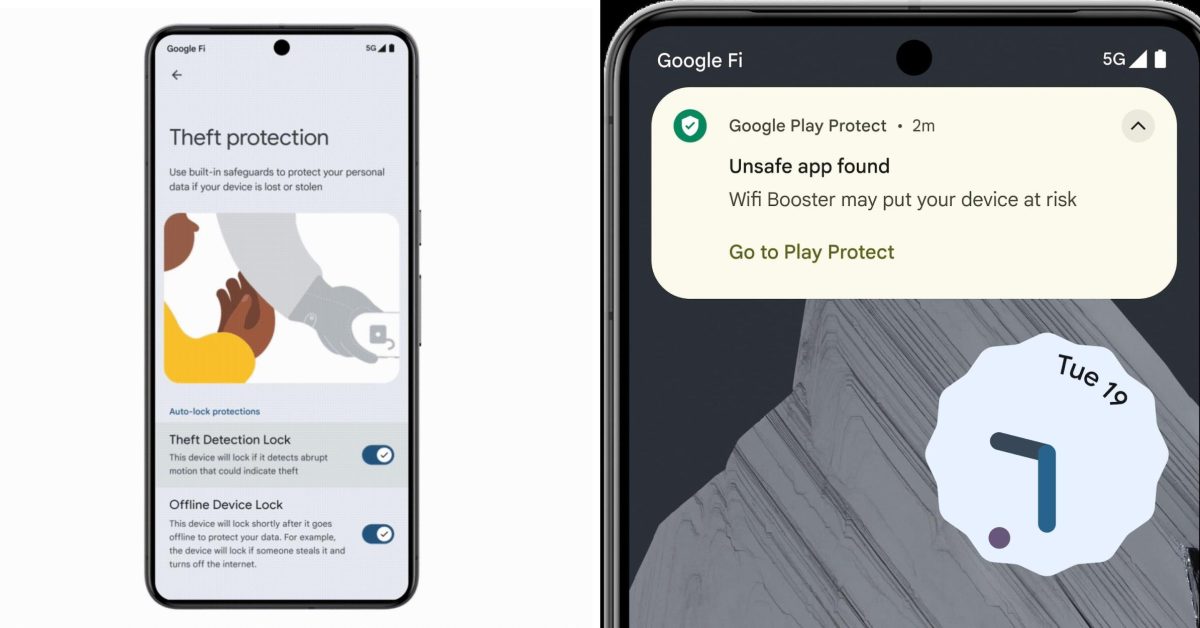In addition to Private Space, Android at I/O 2024 is really working to improve the mobile operating system’s protection against theft, security and privacy.
Protects against theft
The new Android protections are divided into three tiers, starting with making Android devices less attractive to theft.
Google is upgrading Android’s factory reset protection so thieves can’t wipe a stolen device (before resale) “without knowing your device or Google account credentials.” Meanwhile, disabling Find My Device or extending the screen timeout now requires a PIN/password or biometric authentication.
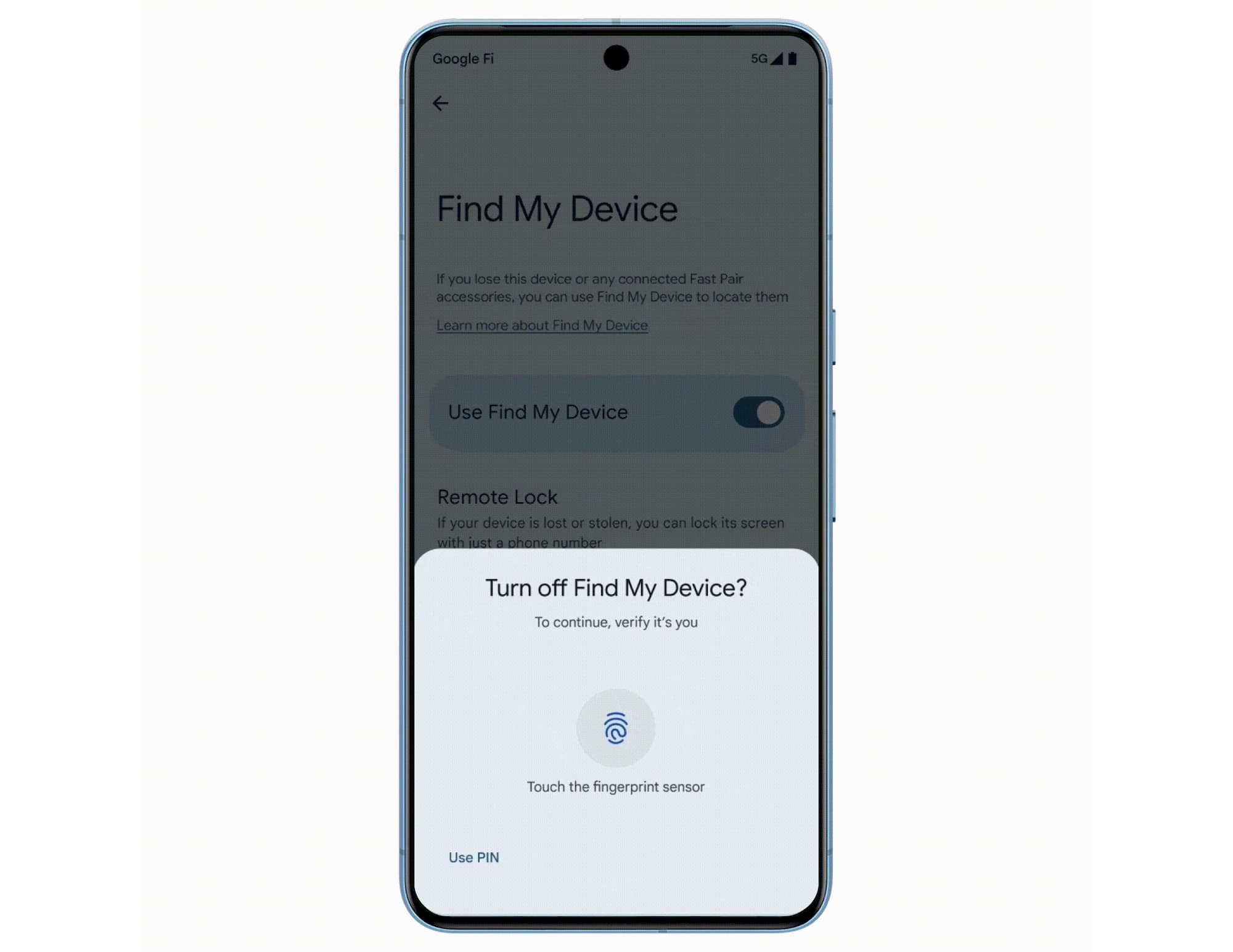
If a thief knows your PIN (by looking at an earlier unlock), Android now requires “biometrics to access and change critical Google Account and device settings, such as changing your PIN, disabling theft protection, or accessing passwords from untrusted location.’
Updates to protect factory settings and private space will be released as part of Android 15. Enhanced authentication protections will be released for select devices later this year.
When your phone is stolen, new features like Theft Detection Lock will detect that it was taken from your hand. Google uses device sensors and patterns to lock devices when someone “tries to run, bike, or walk away.”

Meanwhile, the offline detection lock will be activated “if someone steals [your phone] and turns off the internet.” This is to prevent anyone from accessing your data.
These two features are coming to Android 10+ via a Google Play Services update later this year.
Finally, Android introduces Remote Lock as something faster than Find My Device once your phone is stolen.
…many users are shocked and stressed after a phone goes missing and they can’t remember their Google account password to access Find My Device.
Users will be able to lock their phone screen with just their “phone number and a quick security challenge.”
This buys you time to restore your account data and access additional useful options in Find My Device, including sending a full factory reset command to completely wipe the device.
This is rolling out via a Google Play Services update later this year.
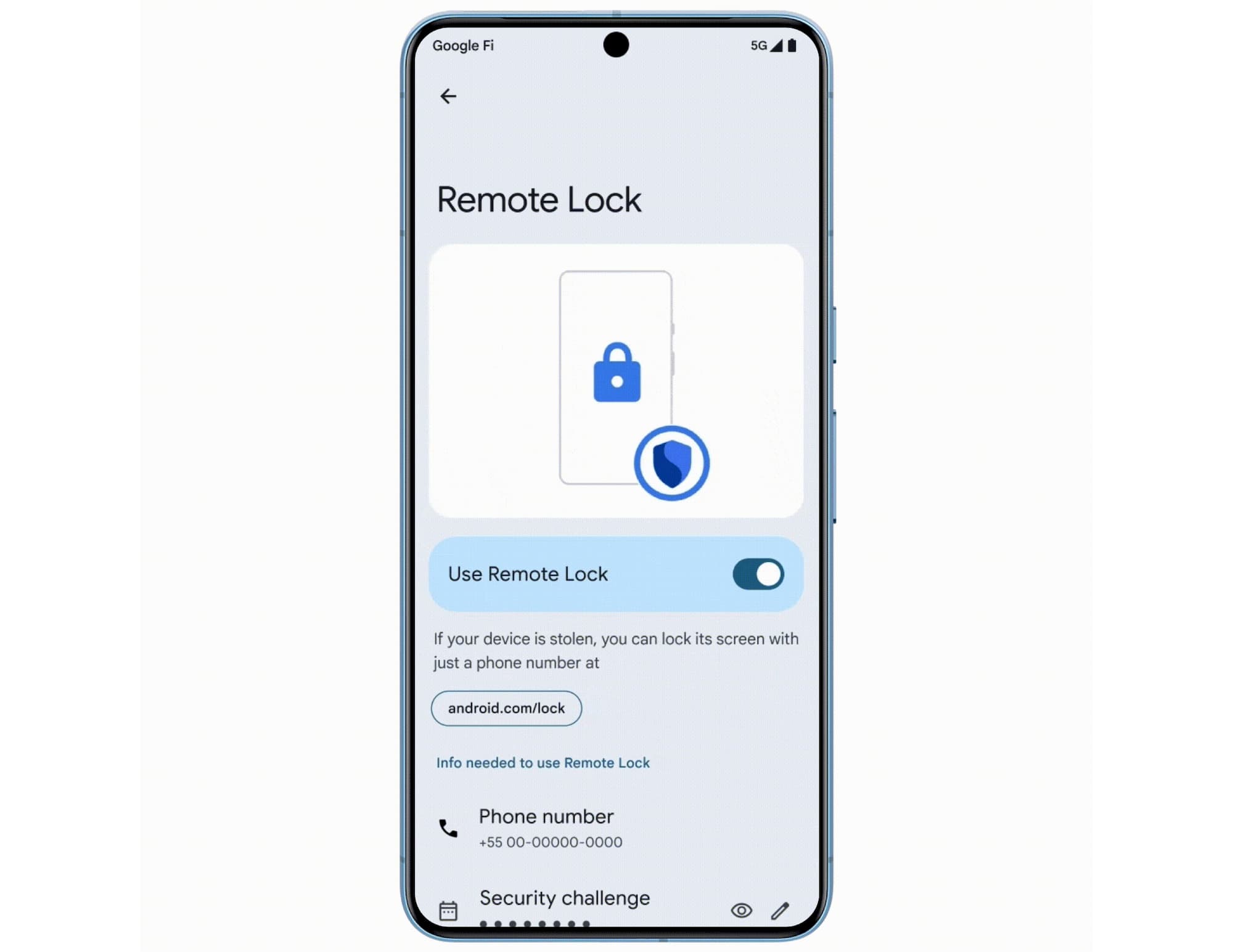
Security and privacy
Google Play Protect gets live threat detection to “analyze additional behavioral signals related to the use of sensitive permissions and interactions with other apps and services.” In case of suspicious behavior, Play Protect will send the app to Google for further review and “warn users or disable the app if malicious behavior is confirmed.”
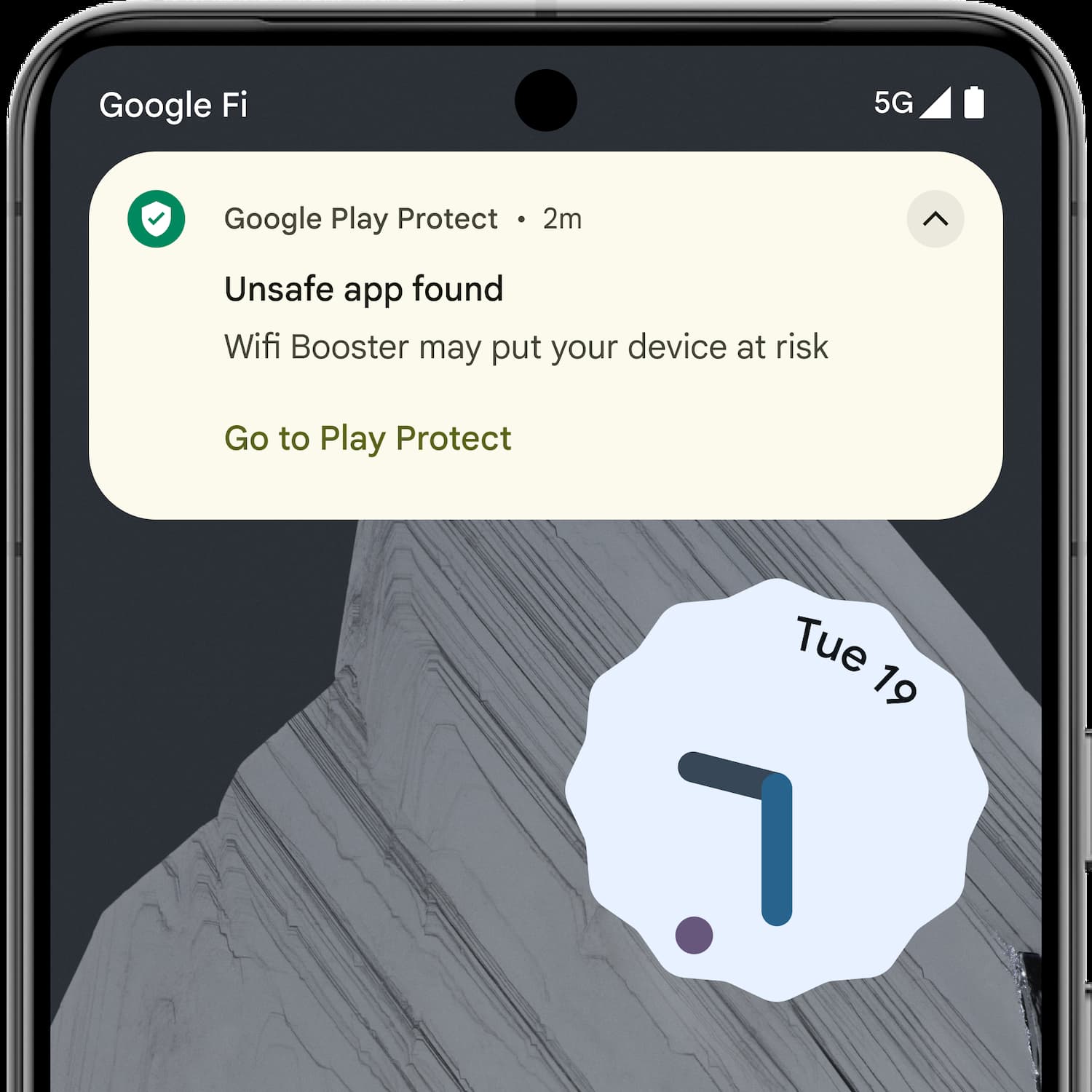
The Android Private Compute Core is used to do all of this in a privacy-preserving way. Live threat detection is coming to Pixel, Oppo, Honor, Lenovo, OnePlus, Nothing, Transsion, Sharp and other manufacturers later this year.
Android 15 will hide one-time passwords from anti-spyware and anti-fraud notifications. There are a few exceptions for accompanying wearable customers. OTPs and private notification content will also be hidden when sharing screens. Login screens — usernames, passwords and credit card numbers — will also be hidden. Google is also expanding single-app screen sharing on the Pixel.
Finally, Android is getting a “more prominent on-screen indicator” later this year, with a tap to disable it.
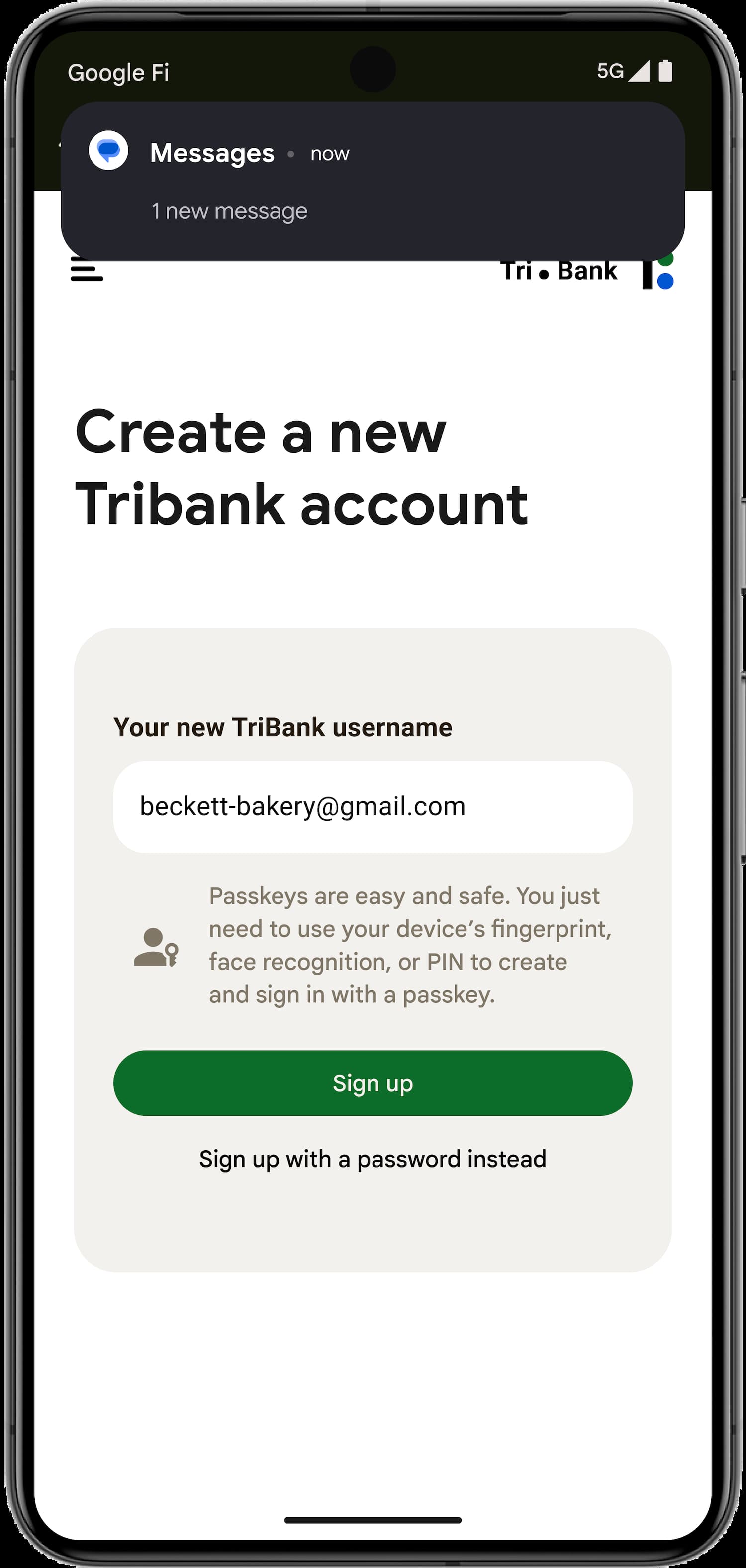
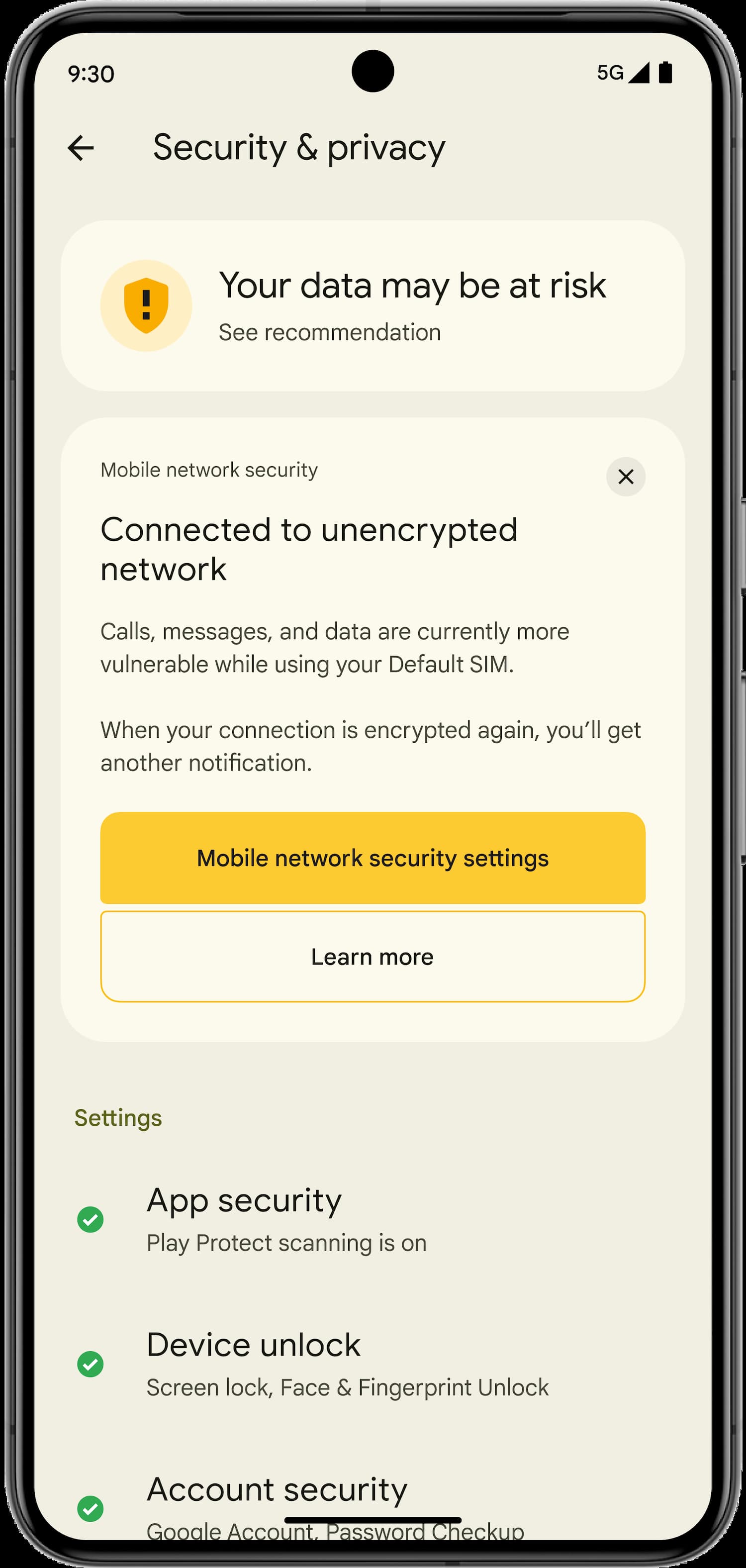
Android 15 adds new cellular protections, warning you if the network connection is unencrypted and “potentially exposing voice and SMS traffic to radio interception.”
These [cellular] features require OEM device integration and compatible hardware. We work with the Android ecosystem to bring these features to users. We expect OEM adoption to progress over the next few years.
FTC: We use automatic affiliate links that earn revenue. More ▼.
